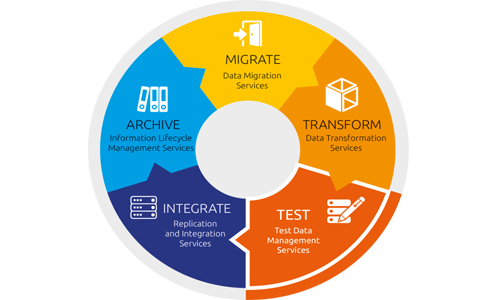Data Integration
To address the interoperability challenges in data sharing and reusage data integration is needed. Today, when every organization uses a variety of data management systems which inevitably means that there are a variety of data formats that exist within a single working entity, data integration needs to implemented to combine various data types and formats into a single location that is commonly referred to as a data warehouse. This further helps us achieve the ultimate goal of data integration to generate valuable and usable information for problem solving and new insights.

Data integration is one of the applied areas having its application in in any and every industry. The benefits achieved by unifying data into a single data source help you access untapped information from within the datasets. Immaterially, a government department looking to eliminate data silos between departments or an organization looking to merge databases between partners, data integration plays an essential role in mitigating tedious data manipulation methods, provide better customer service, streamline operations, improve decision making, and overall increase productivity.
We offer Data Integration Solutions for:
Data Silos – We integrate the data in silos from heterogeneous data sources that is stored in specific locations such as legacy systems and disjointed departments. Earlier departments used to select software and methods for data storage with only their needs in mind. Now it is essential to consider cross-functionality. By consolidating data we help you bring proprietary, legacy data into new systems that can easily be accessed by any team member.
Semantic Integration – Our team of experts help you weed out the common problem of using various systems to collect data such as ontology issues. This means having multiple types of data that describe the same thing but are organized differently. By removing variations and creating a structured data warehouse, we help you find your data more easily, analyze patterns, and make sense of it much more efficiently.
Accessibility - “Create once, deliver to many”. By creating a central data source, data users within your organization can access the same information which can reduce the number of questions asked, increase the speed of data access, and limit the possibility of having erroneous replicated data. Leveraging independence to authors and users to use systems of their choice and data access what they need from a central location respectively.
Data Integration Adds Value - While the data integration solutions listed above inevitably add value by saving time and money, data integration is also useful for much larger concepts and processes. The data management solutions listed below are also part of our data integration service offerings.
Business Intelligence (BI) – With our experience in industry leading BI solutions and data integration standard solutions, we help organizations implement best in class BI solution to analyze business data to help make better business decisions. Prior to using any BI tool, it is essential that data is structured, cleaned, and prepared for analysis. The data can also be used to generate informative visual reports.
Decision Making – We emphasize the need of decision-makers to have an in-depth understanding of all necessary information to help their organization thrive. Identifying strategies and steps to take cannot be done effectively when data is left unstructured, is siloed, or is difficult to access.
Master Data Management (MDM) – We provide MDM services once the data integration is done. MDM requires the input of specific policies and guidelines that the data administrators enforce to create a “single version of the truth” for the end user.
Data Virtualization – The data virtualization services offer users to access, manipulate, and query data without needing access to the actual data storage location. To virtualize data effectively, we recommend well-constructed back-end structure for data to be properly maintained. This will allow front-end applications and self-service solutions to function optimally.
